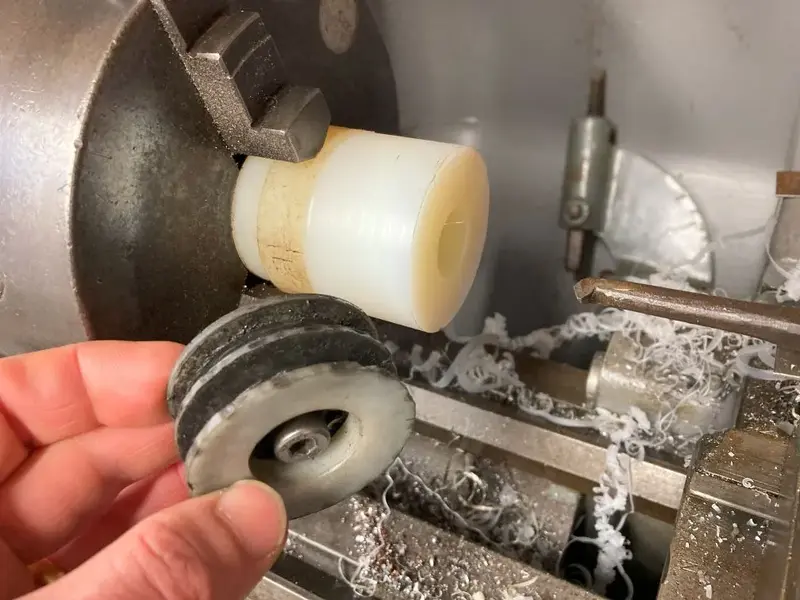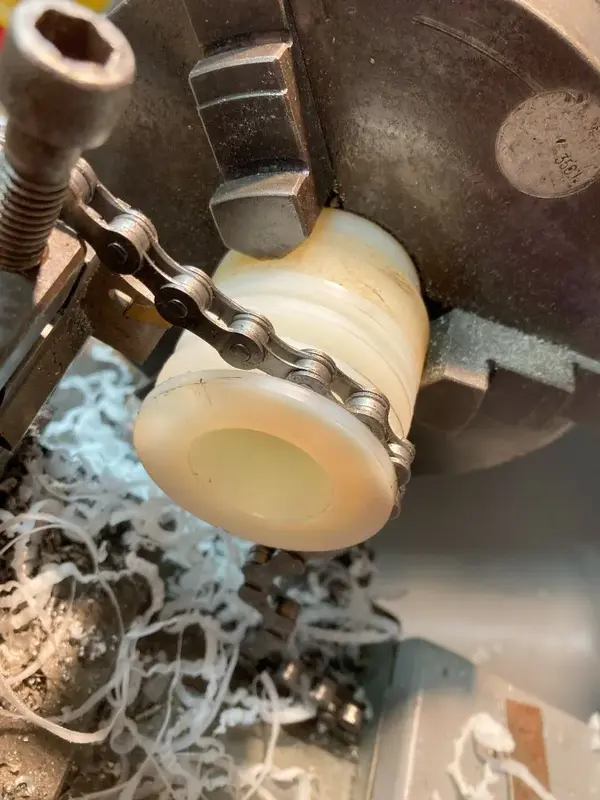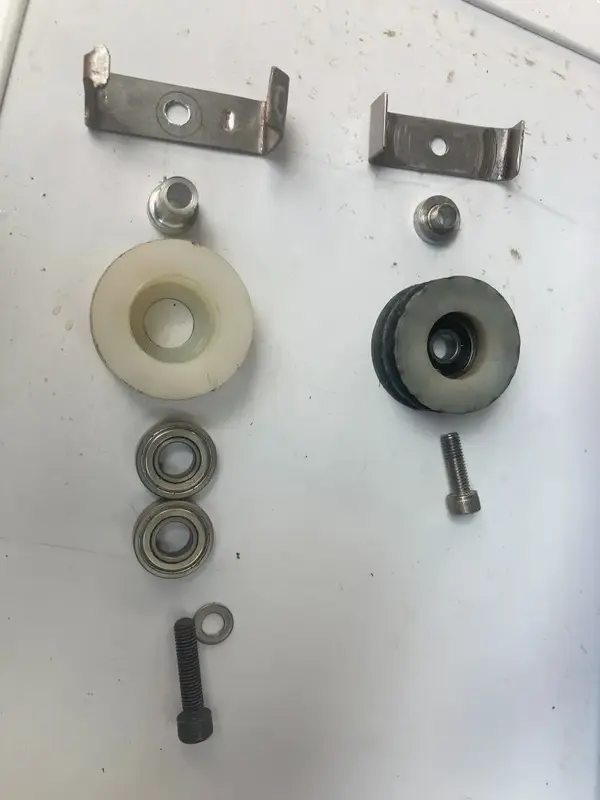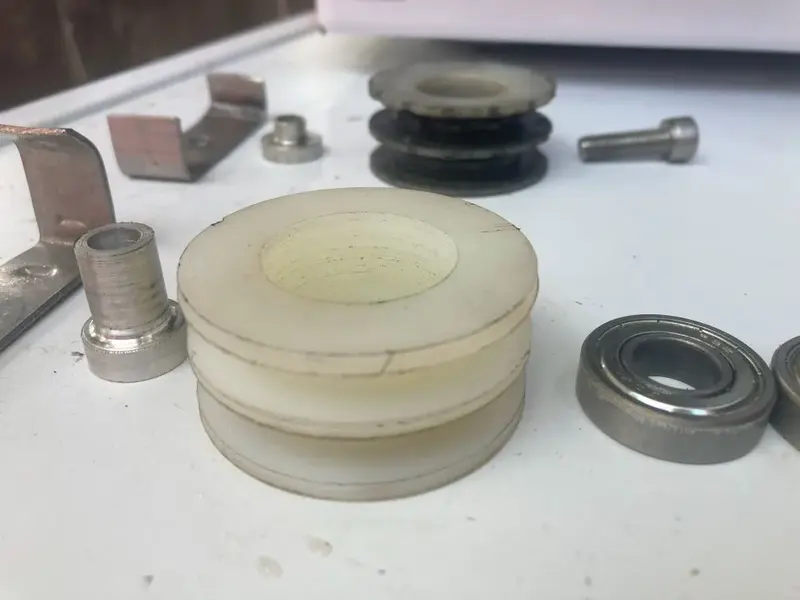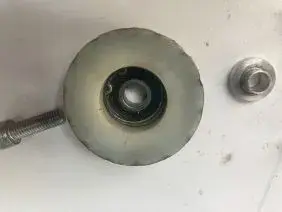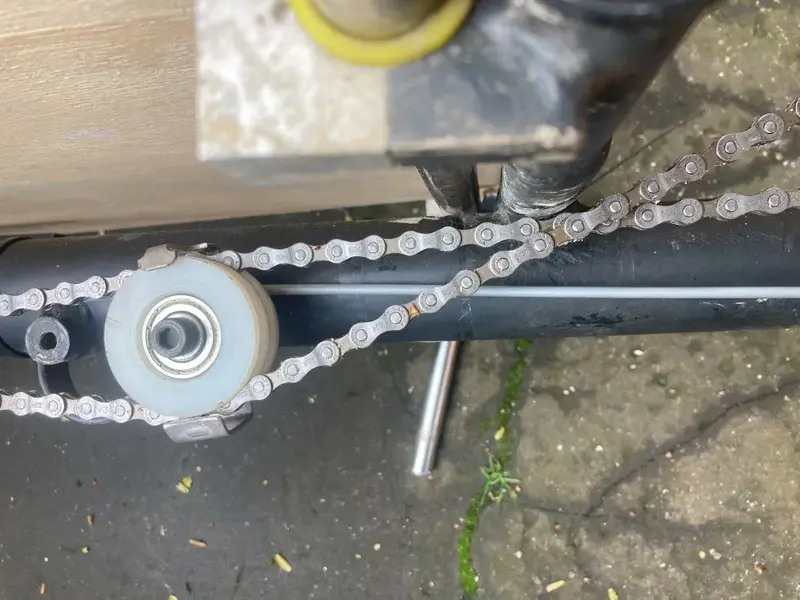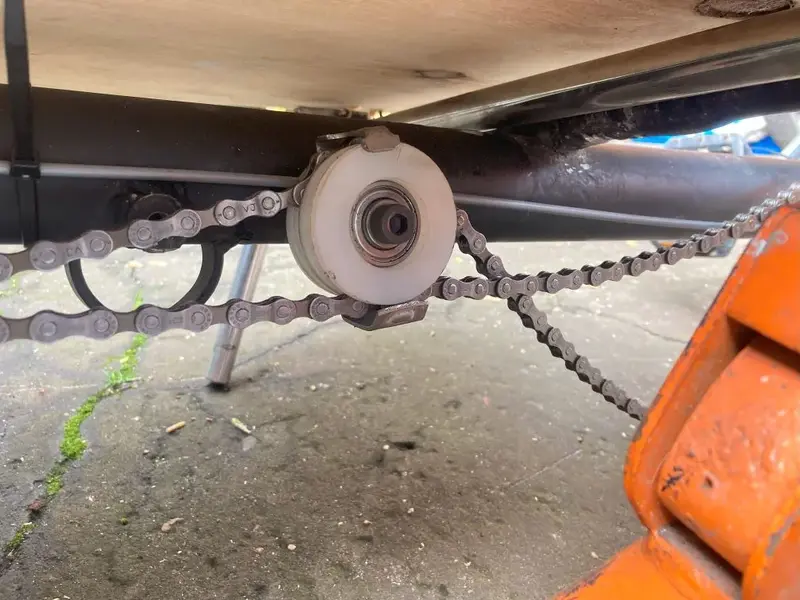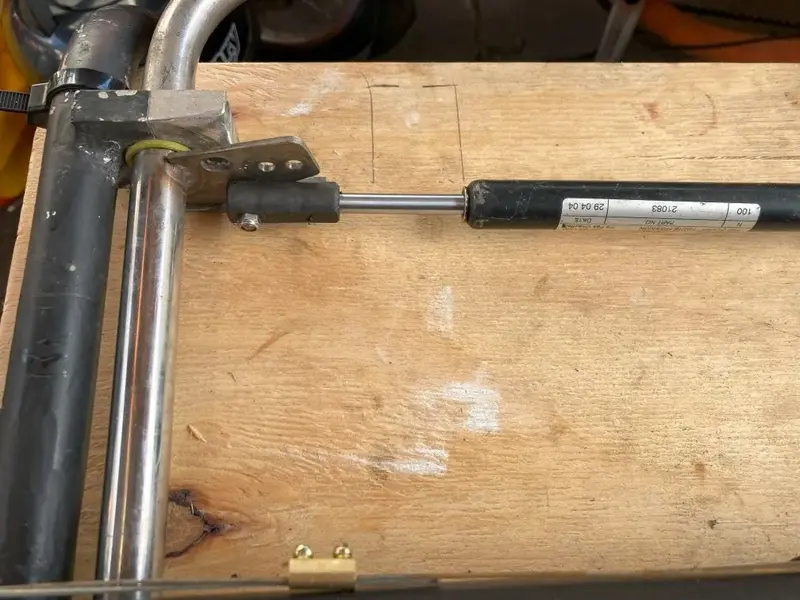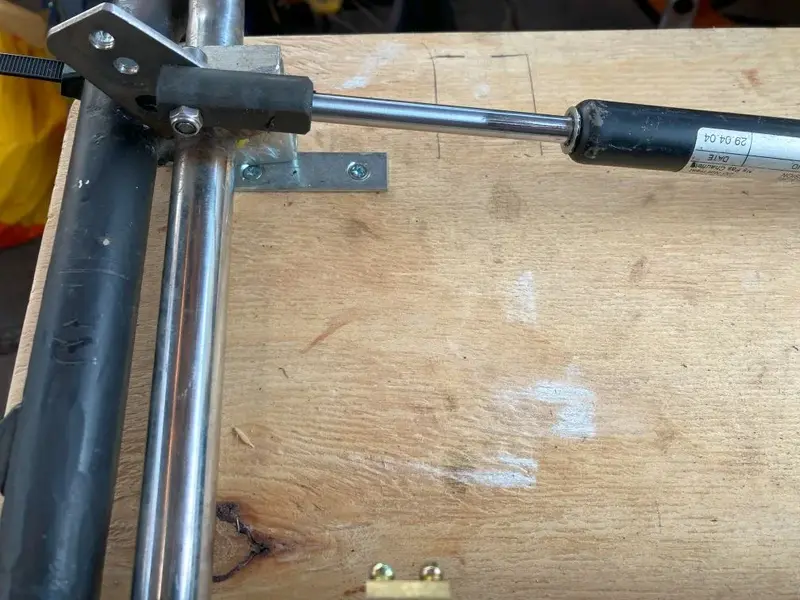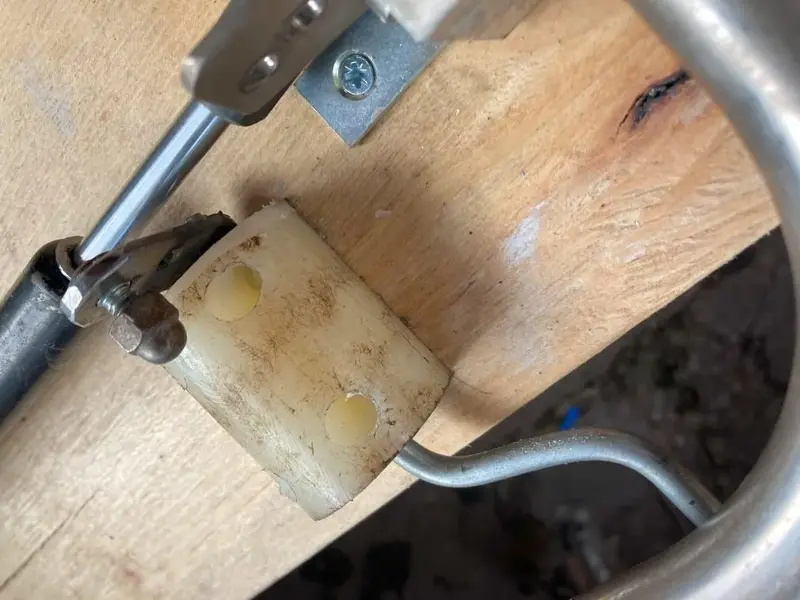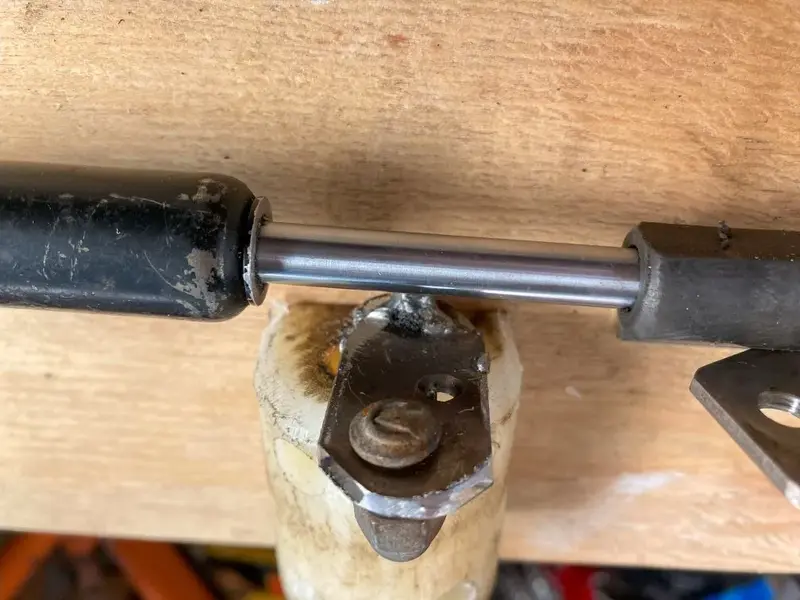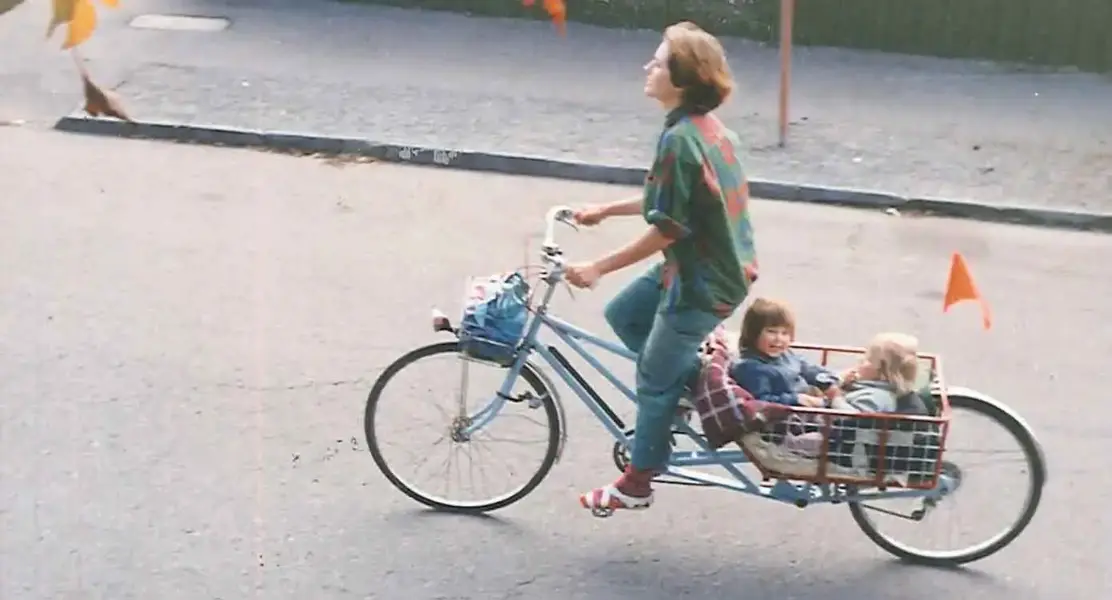Helicoil time:
Cheers to @novocaine for the tip...
The rear derailleur hanger was bent and the threads were stripped.
I started by bending it back into shape, it worked, I don't like doing an operation like this on what I think is cast ally, but needs must.

Then on to drilling out the stripped hole and threading it with the tap from the kit. (the kit was £10.5 on fleabay.)

Inserting the coil is easy, but takes a bit of skill, I only know this because I did it wrong the first time and one of the coil threads spanned across 2 of the cut threads, I just happened to notice this so it was ok, and because it was a through hole I could just thread it on to remove it and try again.



The coil is too long for this application, so I cut the excess off with a side cutters one ring at at time. seemed to work.


Back on the bike, the enormous sprocket wouldn't fit, I think Joe may have said something similar previously. So I just removed the meat off the mount block with an angle grinder and a bit of freehand and jobs a throbber.

I had the rear sprocket cluster and the derailleur in stock from buying a few bits when chain reaction were selling off all their bits a while ago. So I might as well use them, 3 new chains from Joe and these parts make an almost new transmission. Just the front chainwheel is pre-loved.
Next post will be the chain idler, or mid drive jockey, or whatever you would call it. I wonder if Burrows made a user manual for this bike. I saw a manual or guide for the Ratcatcher on ebay, it may still be there, If someone has a scan of an 8 freight manual maybe send me a message. @mynchiboy ?
Cheers to @novocaine for the tip...
The rear derailleur hanger was bent and the threads were stripped.
I started by bending it back into shape, it worked, I don't like doing an operation like this on what I think is cast ally, but needs must.
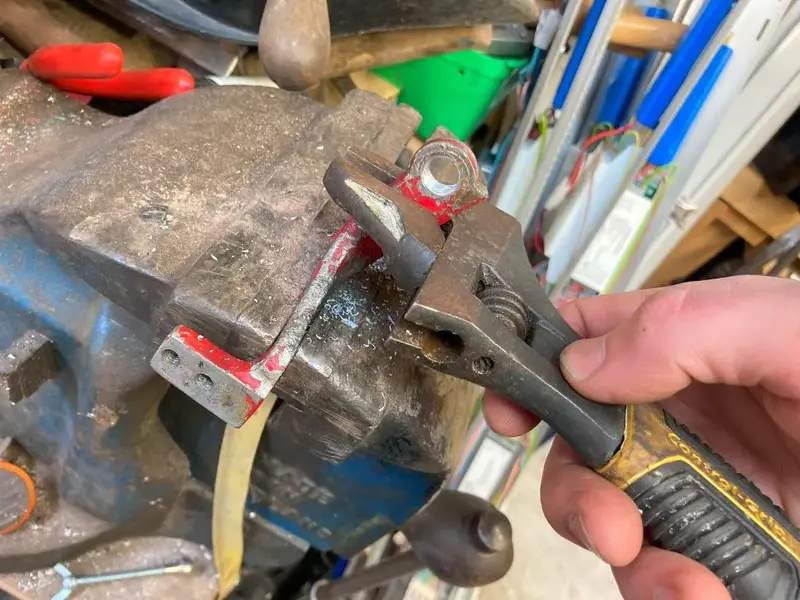
Then on to drilling out the stripped hole and threading it with the tap from the kit. (the kit was £10.5 on fleabay.)
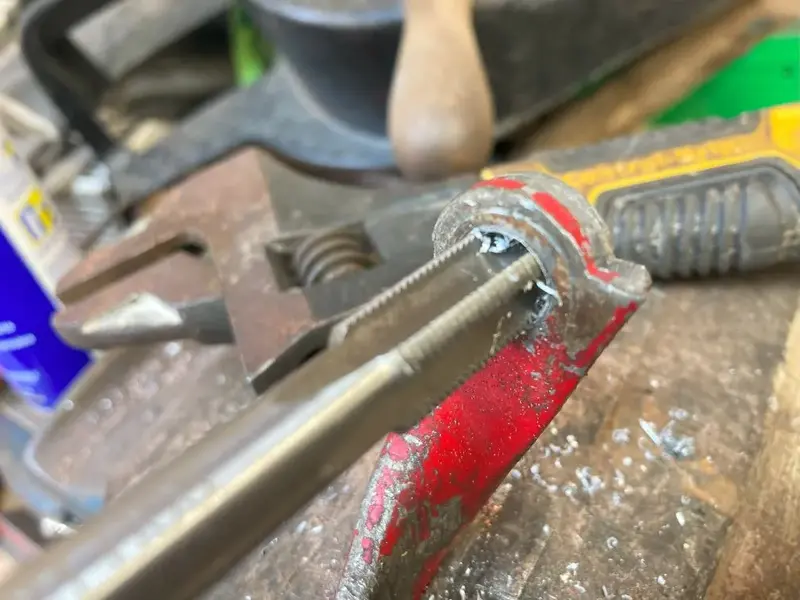
Inserting the coil is easy, but takes a bit of skill, I only know this because I did it wrong the first time and one of the coil threads spanned across 2 of the cut threads, I just happened to notice this so it was ok, and because it was a through hole I could just thread it on to remove it and try again.
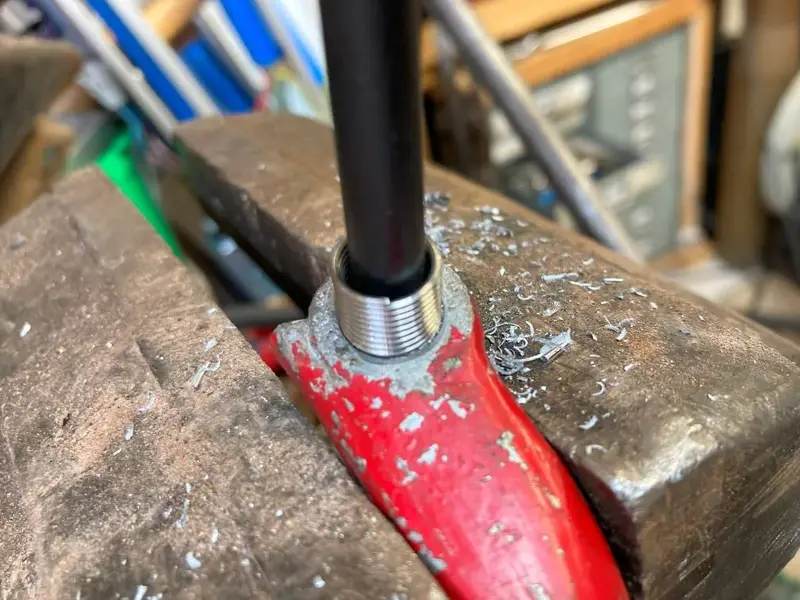
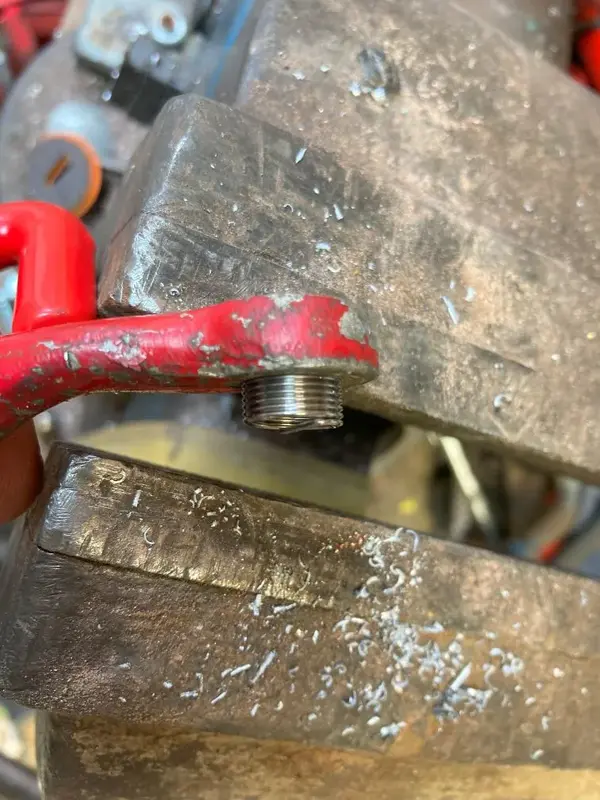
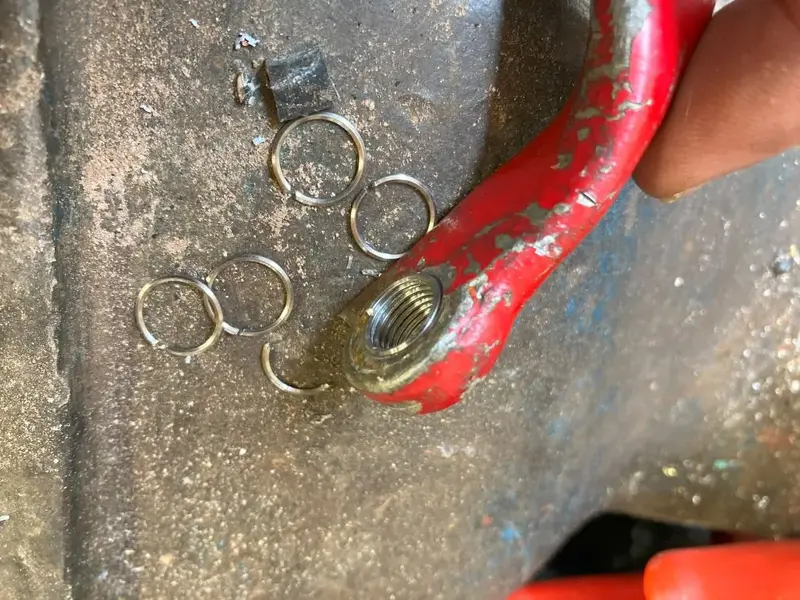
The coil is too long for this application, so I cut the excess off with a side cutters one ring at at time. seemed to work.
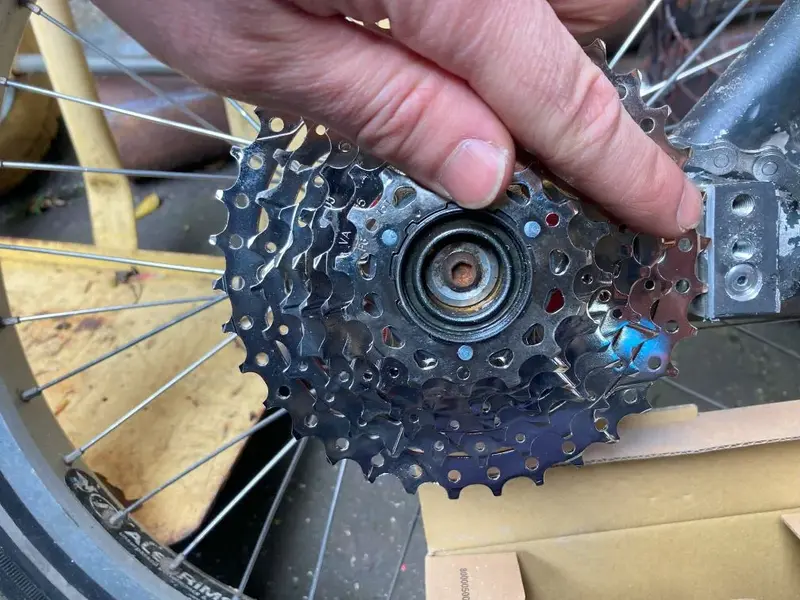
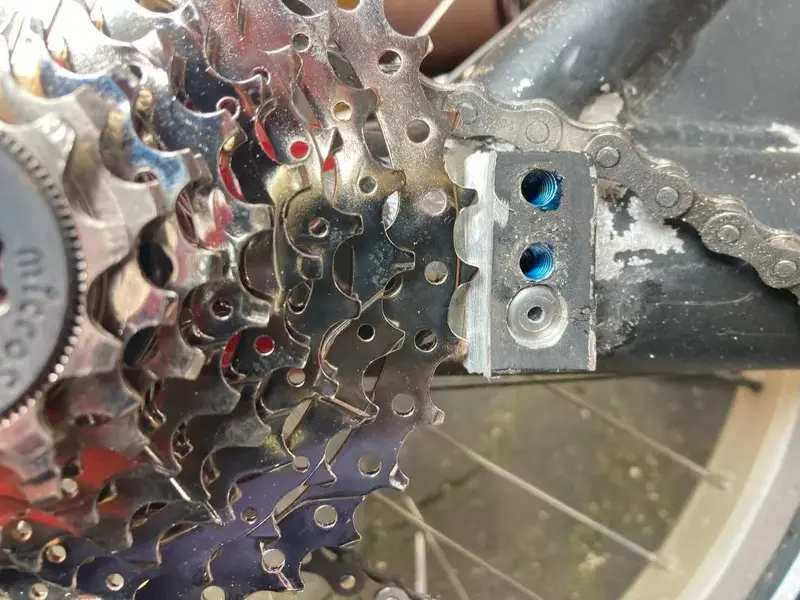
Back on the bike, the enormous sprocket wouldn't fit, I think Joe may have said something similar previously. So I just removed the meat off the mount block with an angle grinder and a bit of freehand and jobs a throbber.
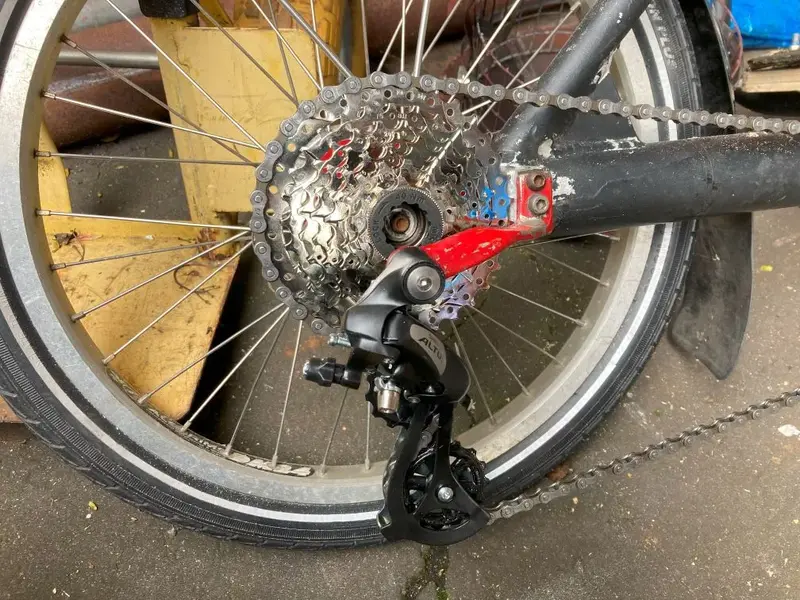
I had the rear sprocket cluster and the derailleur in stock from buying a few bits when chain reaction were selling off all their bits a while ago. So I might as well use them, 3 new chains from Joe and these parts make an almost new transmission. Just the front chainwheel is pre-loved.
Next post will be the chain idler, or mid drive jockey, or whatever you would call it. I wonder if Burrows made a user manual for this bike. I saw a manual or guide for the Ratcatcher on ebay, it may still be there, If someone has a scan of an 8 freight manual maybe send me a message. @mynchiboy ?
